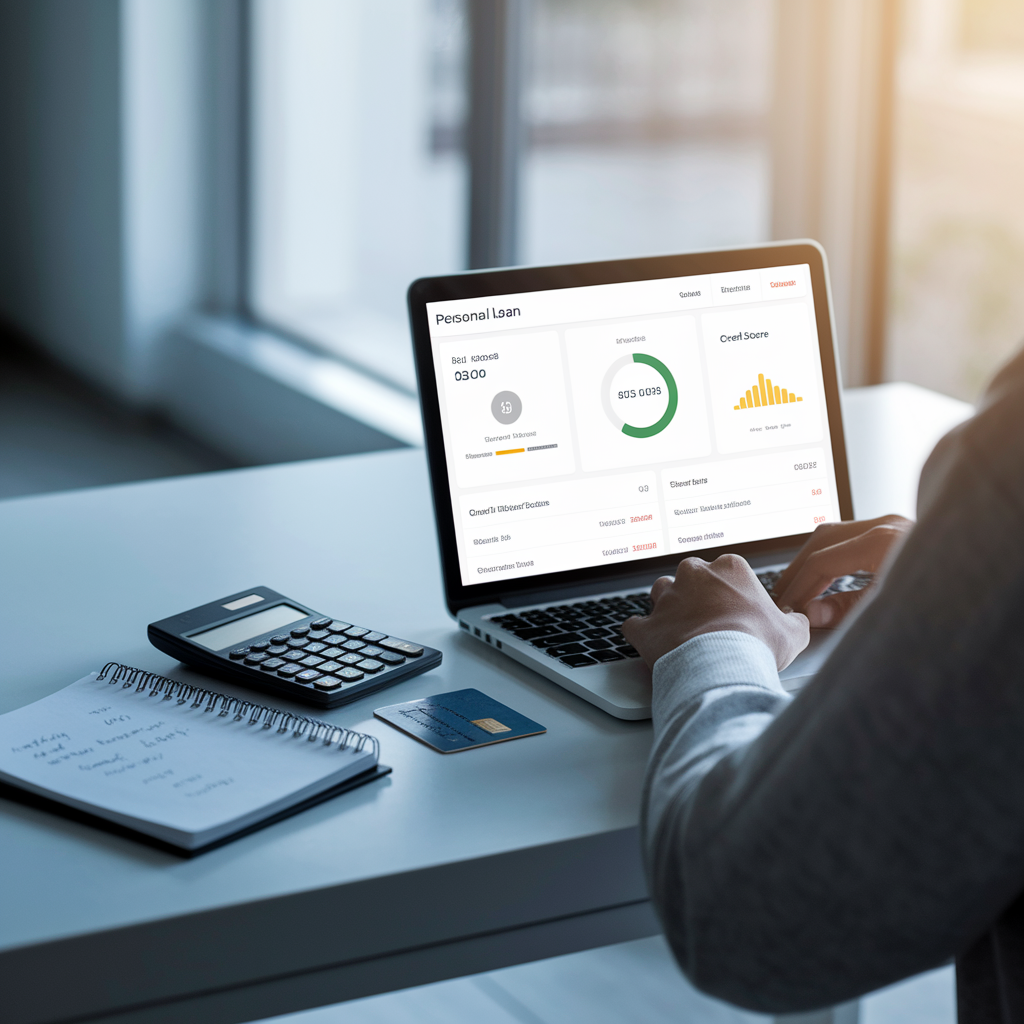Navigating the world of personal loans can feel overwhelming, especially when your financial well-being is on the line. Whether you’re looking to consolidate high-interest debt, finance a major home improvement project, or cover an unexpected expense, the interest rate you secure will have a significant impact on your monthly budget and the total cost of borrowing.
This comprehensive guide is designed to demystify the process. We will walk you through the critical factors that lenders consider, show you how to effectively shop around for the best offers, and provide the tools you need to compare personal loan rates like a pro, ensuring you make a decision that benefits your financial future.
Understanding Personal Loan Interest Rates
Before you can compare rates, it’s crucial to understand what the numbers mean. The headline interest rate is important, but it doesn’t tell the whole story. The most accurate measure of a loan’s cost is its Annual Percentage Rate, or APR.
What is an APR?
The Annual Percentage Rate (APR) is the total cost of borrowing money over a year, expressed as a percentage. It includes not only the interest rate but also most of the fees associated with the loan. This can include:
- Origination Fees: A one-time fee some lenders charge for processing your loan application, typically deducted from the loan amount before you receive the funds.
- Application Fees: A fee for applying, though this is less common with personal loans.
- Closing Costs: Other administrative fees associated with finalizing the loan.
Because the APR includes these extra costs, it is the single most effective tool for an apples-to-apples comparison between different loan offers. A loan with a lower advertised interest rate might actually be more expensive if it comes with a high origination fee, and the APR will reflect this.
Fixed vs. Variable Rates
Personal loans typically come with one of two types of interest rates: fixed or variable. Understanding the difference is key to managing your budget.
- Fixed-Rate Loans: The interest rate is locked in for the entire life of the loan. This means your monthly payment will never change, providing predictability and stability. The vast majority of personal loans have fixed rates, making them a popular choice for budget-conscious borrowers.
- Variable-Rate Loans: The interest rate is tied to a benchmark index rate and can fluctuate over time. While the initial rate might be lower than a fixed-rate option, it could rise in the future, increasing your monthly payment. These are less common for personal loans and are generally considered riskier.
Key Factors That Influence Your Loan Rate
Lenders don’t pick rates out of a hat. They use a sophisticated risk assessment model to determine the likelihood that you’ll repay the loan on time. The lower your perceived risk, the lower the interest rate they will offer you. Here are the main factors they evaluate.
Your Credit Score: The Most Important Factor
Your credit score is a numerical representation of your creditworthiness and the single most significant factor in determining your personal loan rate. Lenders use it to predict risk. A higher score demonstrates a history of responsible borrowing, which translates to a lower APR.
Here’s a general idea of how credit scores can impact potential APRs:
| Credit Score Range (FICO) | Credit Rating | Potential APR Range (Illustrative) |
|---|---|---|
| 800-850 | Exceptional | 6% – 10% |
| 740-799 | Very Good | 8% – 14% |
| 670-739 | Good | 12% – 18% |
| 580-669 | Fair | 18% – 25% |
| 300-579 | Poor | 25% – 36% (or higher) |
Note: These are illustrative ranges. Actual rates depend on the lender and other economic factors.
Debt-to-Income (DTI) Ratio
Your Debt-to-Income (DTI) ratio is the percentage of your gross monthly income that goes toward paying your monthly debt obligations (rent/mortgage, credit cards, auto loans, etc.). Lenders use this to gauge your ability to handle a new monthly payment. A lower DTI suggests you have enough disposable income to comfortably repay the loan. Most lenders prefer a DTI ratio below 43%, with many looking for a ratio under 36% for the best rates.
Loan Term and Amount
The length of time you choose to repay the loan (the term) also affects your rate and total cost.
- Shorter Terms (e.g., 2-3 years): These loans often come with lower interest rates but higher monthly payments. You pay less in total interest over the life of the loan.
- Longer Terms (e.g., 5-7 years): These have more manageable, lower monthly payments but typically carry slightly higher interest rates. You will end up paying significantly more in total interest over the loan’s life.
The loan amount can also play a role. Some lenders may offer better rates for larger loan amounts, while others may not. It’s always important to only borrow what you truly need.
Employment History and Income
Lenders want to see stability. A steady employment history and a reliable source of income demonstrate that you have the means to make your payments consistently. While this is a “check-the-box” item for many, a high and stable income can positively influence the rate you are offered.
How to Find and Compare the Best Loan Offers
Now that you know what lenders are looking for, it’s time to shop smart. Following a structured process can save you hundreds or even thousands of dollars.
Step 1: Check Your Credit Report and Score
Before you even think about applying, get a copy of your credit report from all three major bureaus (Equifax, Experian, and TransUnion). You can do this for free annually. Review it for any errors or inaccuracies that could be dragging down your score. Disputing errors can be one of the fastest ways to improve your credit and qualify for a better rate. Knowing your credit score will also give you a realistic expectation of the rates you might receive.
Step 2: Use Pre-qualification Tools
This is arguably the most important step in shopping for a loan. Most online lenders, and many banks and credit unions, offer a pre-qualification process. This allows you to submit basic financial information to see the potential rates, terms, and loan amounts you might qualify for. Crucially, pre-qualification uses a soft credit inquiry, which does not impact your credit score. It allows you to “window shop” for rates without any penalty.
Step 3: Gather Offers from Multiple Lenders
Do not just go with the first offer you see or only check with your primary bank. Cast a wide net to ensure you find the most competitive rate. Consider these sources:
- Online Lenders: Fintech companies often have a streamlined digital process, fast funding, and very competitive rates, especially for borrowers with good credit.
- Traditional Banks: Your existing bank may offer loyalty discounts or relationship benefits. They can be a good option, particularly if you prefer in-person service.
- Credit Unions: As non-profit, member-owned institutions, credit unions often provide some of the lowest interest rates and most customer-friendly terms available.
Step 4: Create a Comparison Table
Once you have several pre-qualified offers, organize them in a simple table to clearly see the differences. This helps you move beyond just the APR and see the full picture.
| Lender | Loan Amount | APR | Loan Term | Monthly Payment | Origination Fee | Total Cost of Loan |
|---|---|---|---|---|---|---|
| Lender A | $10,000 | 7.99% | 36 months | $313.32 | $0 | $11,279.52 |
| Lender B | $10,000 | 7.50% | 36 months | $311.06 | 2% ($200) | $11,198.16 + $200 Fee |
| Lender C | $10,000 | 8.50% | 48 months | $246.46 | $0 | $11,830.08 |
This table reveals that even with a lower APR, Lender B might be a slightly more expensive option initially due to the fee. It also clearly shows how a longer term (Lender C) results in a much higher total cost despite the lower monthly payment.
Common Pitfalls to Avoid When Shopping for a Loan
Being an informed borrower means knowing what mistakes to avoid. Watch out for these common traps:
- Focusing Only on the Monthly Payment: A low monthly payment can be tempting, but it often means you’ve chosen a longer loan term, which dramatically increases the total interest you’ll pay. Always look at the APR and the total cost.
- Ignoring Fees: An origination fee of 1% to 8% can add a significant amount to your loan’s cost. Also, check for prepayment penalties, which charge you a fee if you pay off the loan early.
- Submitting Too Many Formal Applications: Remember the difference: pre-qualification is a soft pull (no impact), but a formal application is a hard pull, which can temporarily lower your credit score by a few points. Only submit a formal application once you have chosen the best pre-qualified offer.
- Not Reading the Fine Print: Always read the loan agreement thoroughly before signing. Understand all the terms, conditions, and fees to avoid any surprises down the road.
Frequently Asked Questions (FAQ)
What is a good APR for a personal loan?
A “good” APR is relative to your credit profile and the current market. For a borrower with an excellent credit score (760+), an APR under 10% is generally considered very good. For someone with a fair credit score, an APR under 20% might be competitive. The national average APR for a 24-month personal loan often hovers around 9-12%, but this fluctuates.
How quickly can I get a personal loan?
Funding speed varies by lender. Many online lenders can approve and fund a loan within one to three business days after you submit all necessary documentation. Traditional banks and credit unions may take longer, sometimes up to a week.
Can I get a personal loan with bad credit?
Yes, it is possible to get a personal loan with bad credit, but it will be more challenging and more expensive. You should expect a much higher APR (potentially 25% to 36% or more) and may need to meet stricter income requirements. Some lenders specialize in loans for borrowers with poor credit.
Does pre-qualifying for a loan affect my credit score?
No. Pre-qualifying for a loan or checking your rate uses a soft credit inquiry, which is not visible to other lenders and has zero impact on your credit score. It is a risk-free way to shop for the best rates.
Final Steps to Secure Your Best Rate
Finding the right personal loan is a process of careful preparation and diligent comparison. By understanding your credit profile, leveraging pre-qualification tools, and analyzing offers based on APR and total cost, you empower yourself to make the smartest financial choice. A few hours of research can translate into substantial savings over the life of your loan.
Before you finalize your decision, ensure you have all your documentation ready (like pay stubs and tax returns) to expedite the formal application process. Ultimately, the best loan is the one that meets your needs at the lowest possible cost. To fully understand the landscape and your rights as a borrower, you can find valuable, unbiased information when you compare the best personal loan rates available today through government-provided consumer resources.





